LOT # 4181
A VERY RARE AND MAGNIFICENT LATE KANGXI FAMILLE ROSE DECORATED JAR
清康熙 粉彩花鳥罐
scroll to zoom
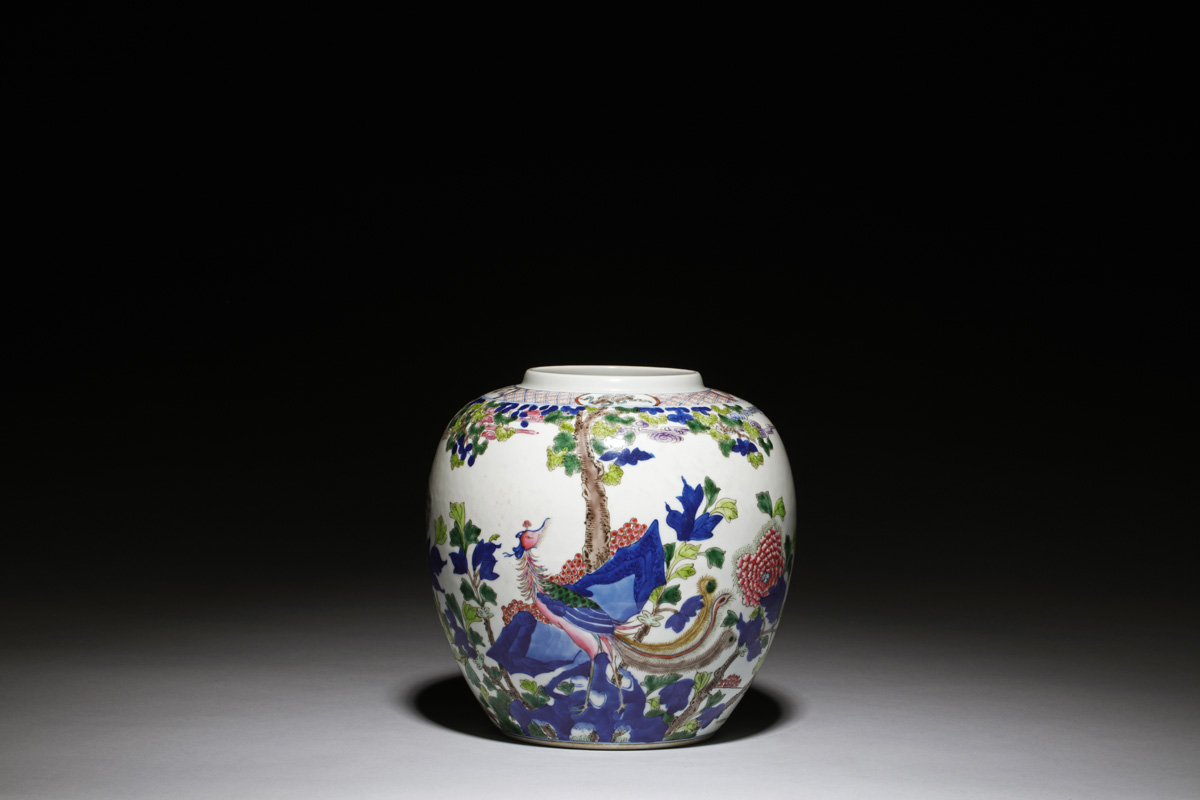
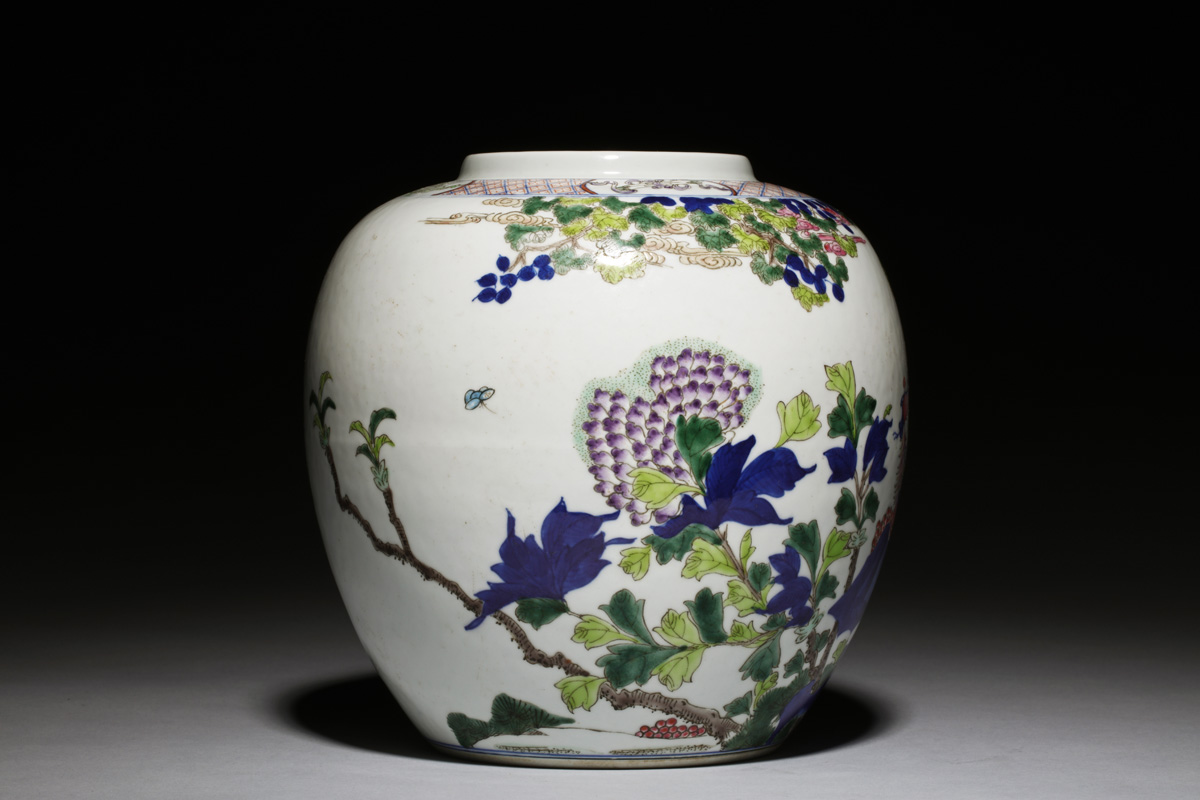
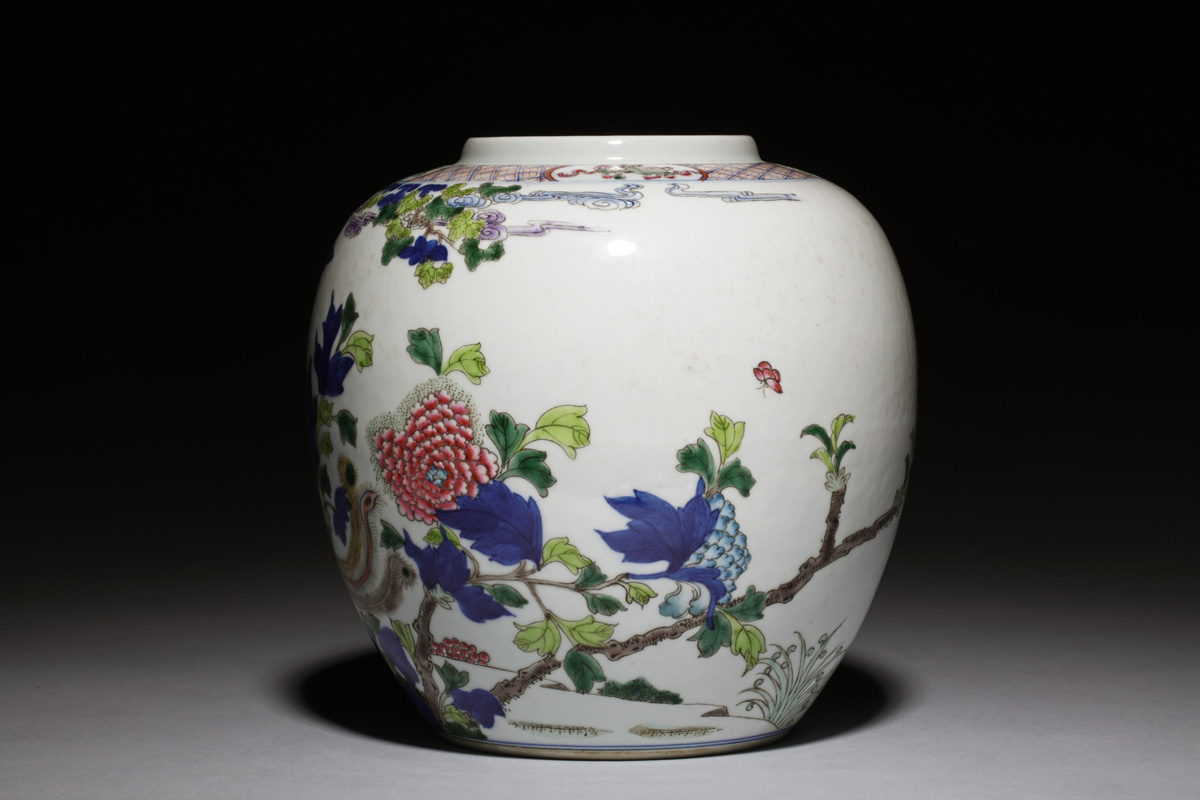
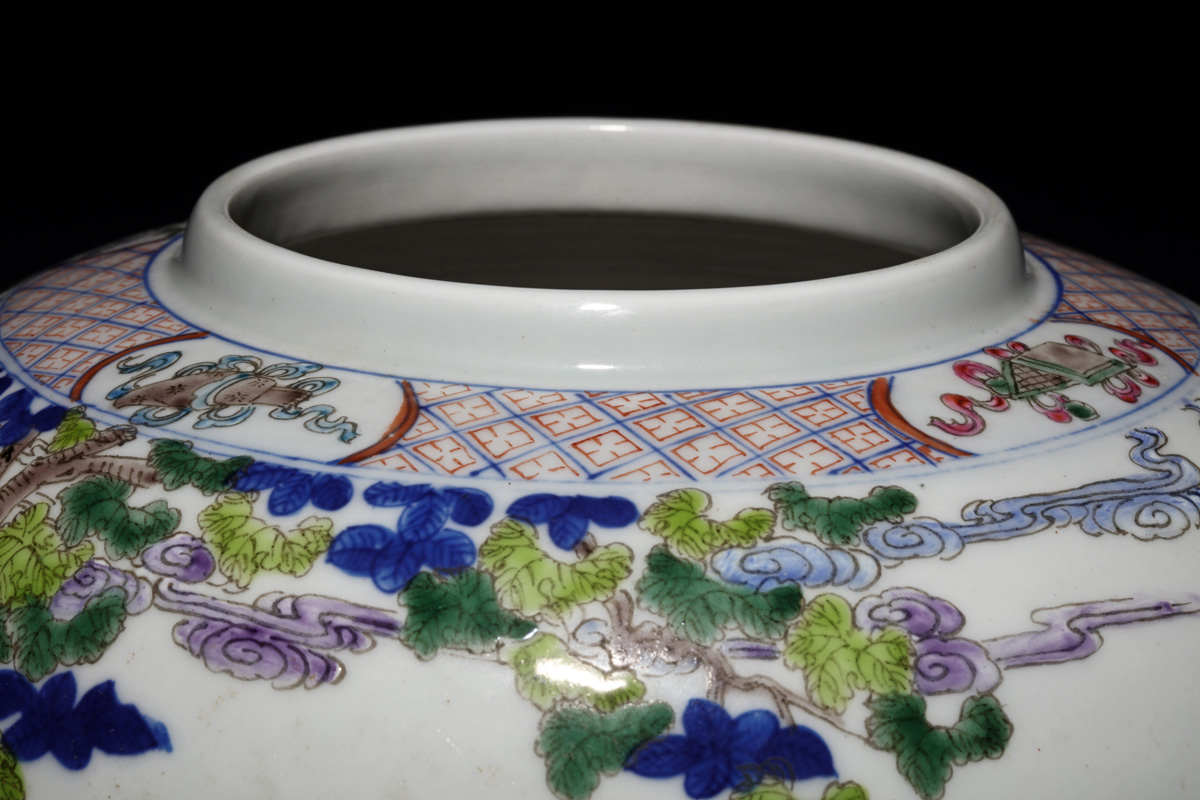
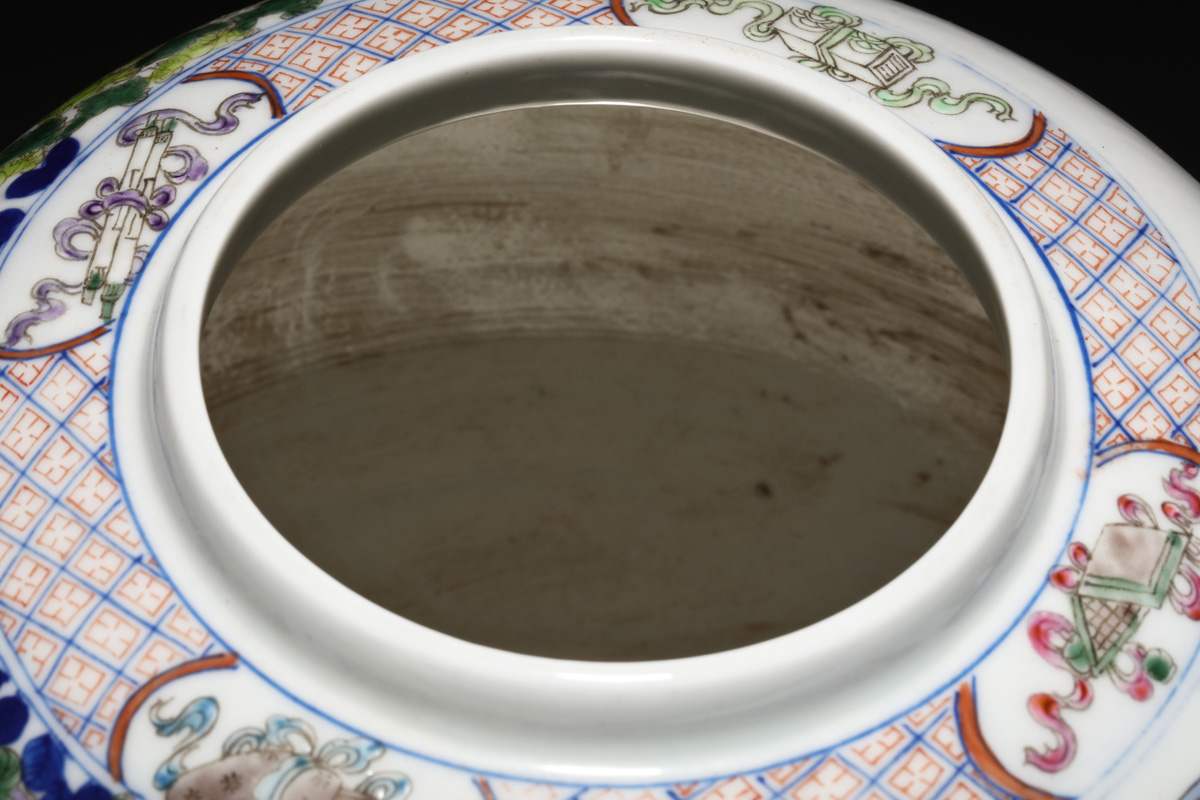
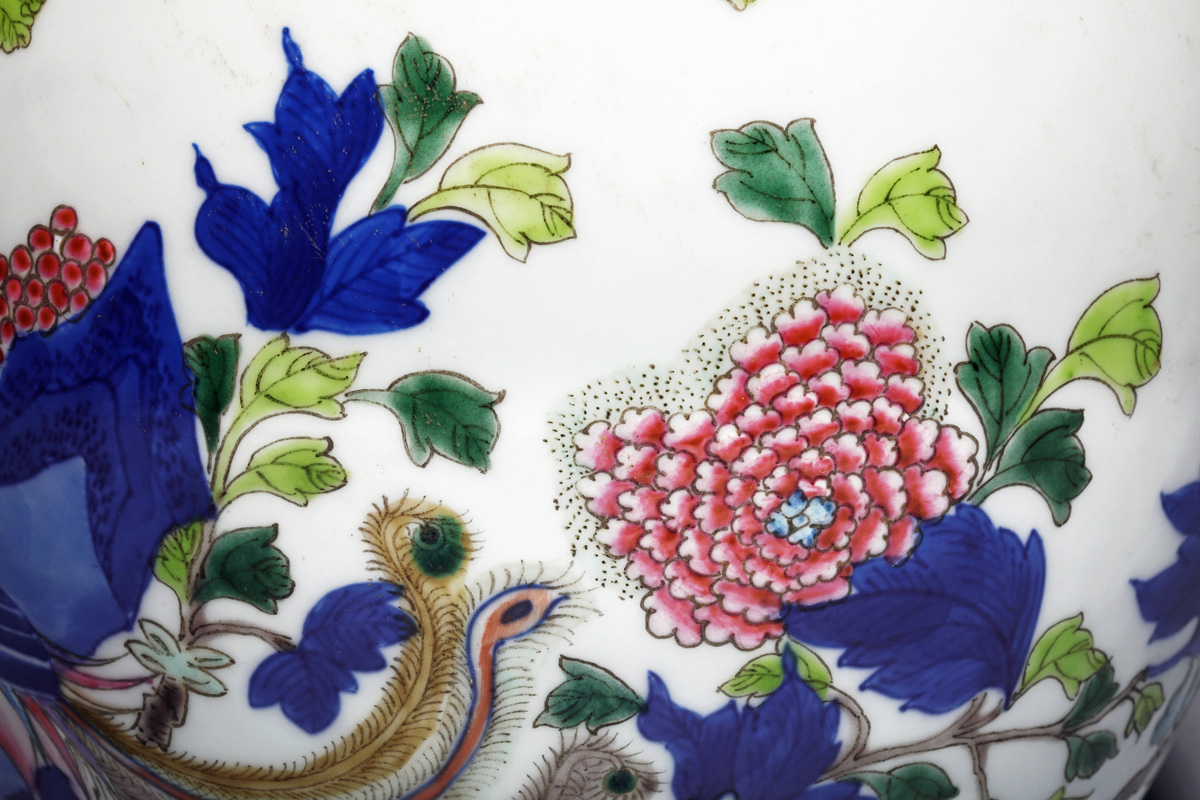
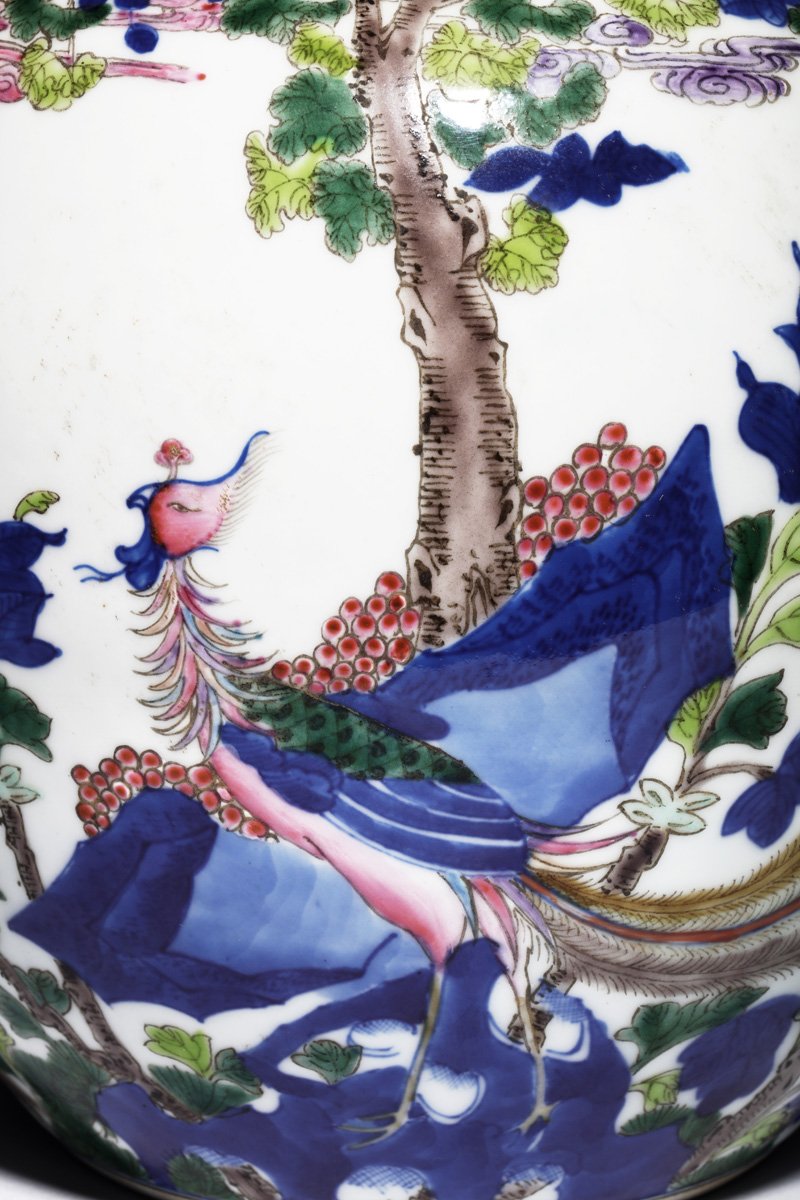
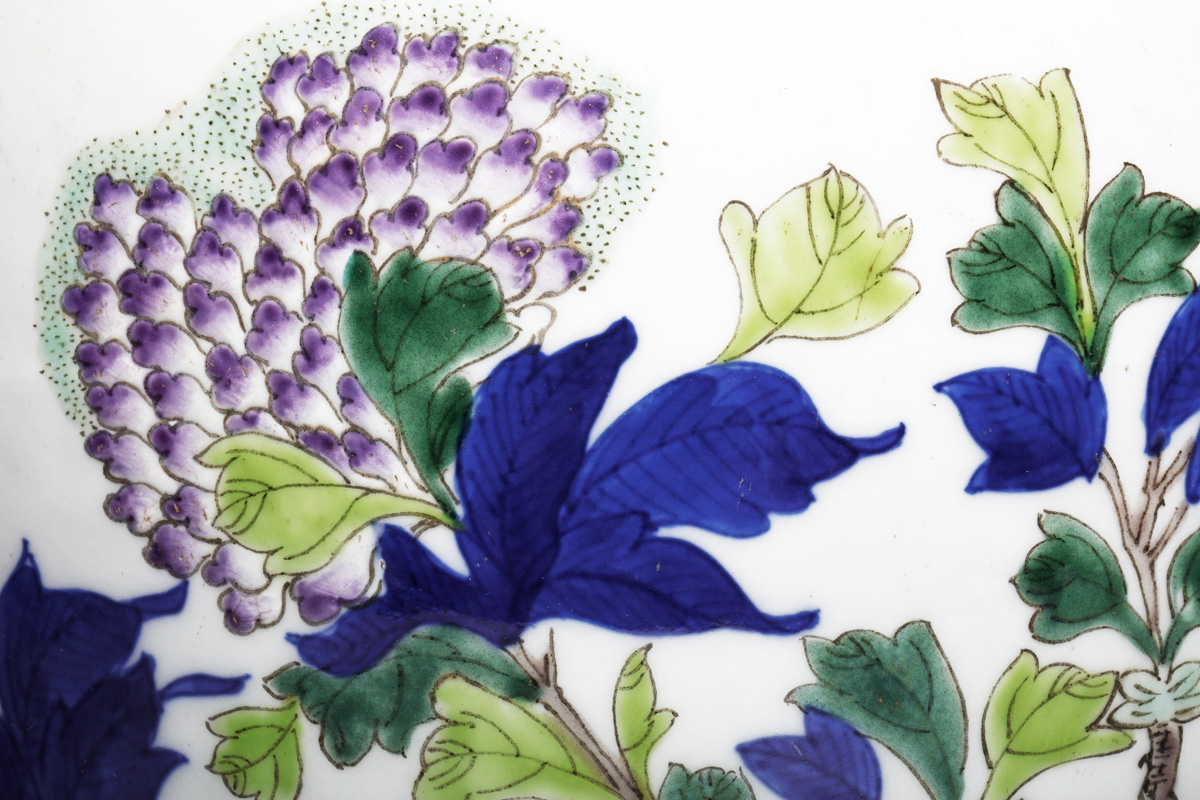
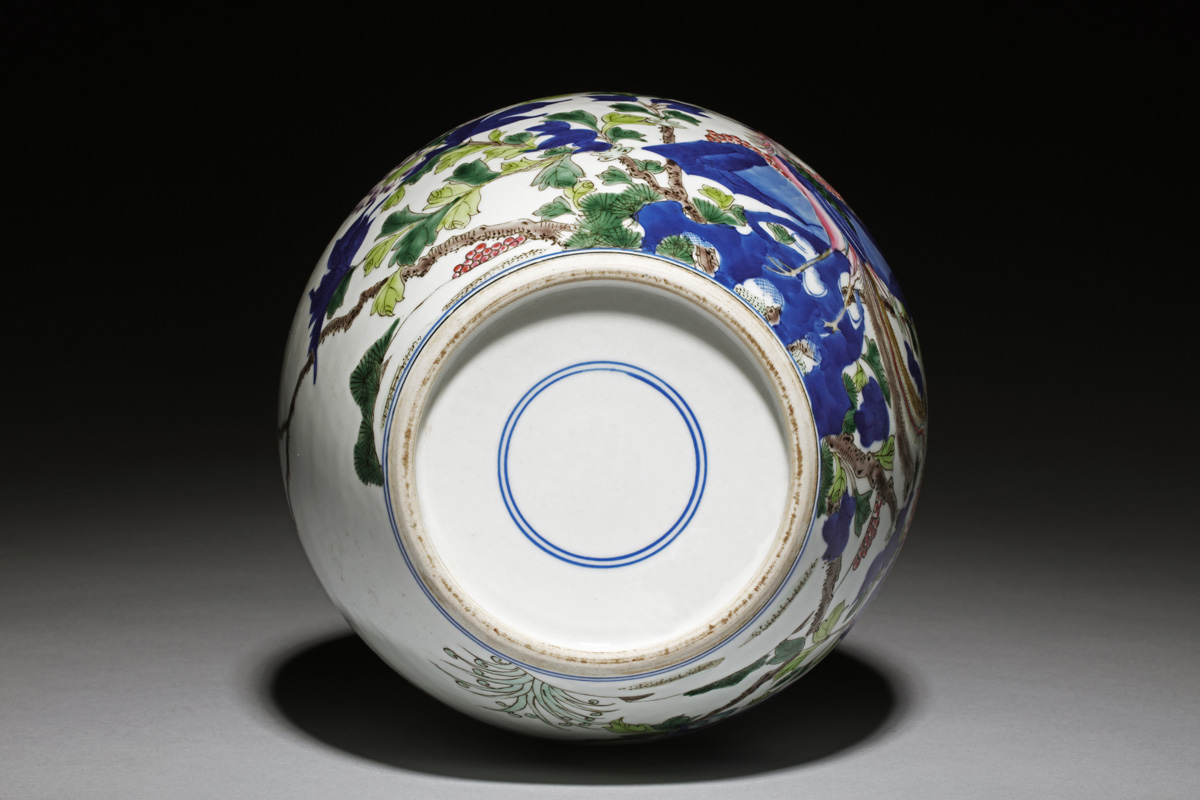









Dimension:
Height: 7 in (17.8 cm) Diameter: 6 1/2 in (16.5 cm)
Estimated Price:
$2000 - $2500
Kangxi period.
A very rare and magnificent Kangxi famille rose decorated jar, depicting a phoenix in a flowering garden; its shape is elegant having a smooth curved contour; the body is thin and is made of a fine and very hard clay; the lower part where the wall is thin is semi-translucent; this jar is made by luting the pre-made upper and lower halves as revealed by careful examination of the inner wall, a technique common in Ming Dynasty, but very rare during Qing Dynasty; the glaze is smooth and white; the underglaze blue is very intense and slightly dark, typical for late Kangxi; the green enamels are smooth, transparent, and clean, also typical for Kangxi; the combination of good underglaze blue and overglaze enamels yields vivid coloration that seldom existed in late Qing; the painting is delicately done with very fine brushwork (except the blue); the outer base has a double-circle mark in underglaze blue, which appears to sink to the bottom of the glaze, contrasting later imitations that have cobalt blue looks like applied on/near the top of glaze. This jar is an outstanding sample Kangxi porcelains. A historical book states that on the 16th year of Kangxi, the county head forbade writing of the reign mark on porcelain wares; this may be the reason that jar has double circle mark instead of the reign mark.
Height: 7 in (17.8 cm) Diameter: 6 1/2 in (16.5 cm)
Estimated Price:
$2000 - $2500
Kangxi period.
A very rare and magnificent Kangxi famille rose decorated jar, depicting a phoenix in a flowering garden; its shape is elegant having a smooth curved contour; the body is thin and is made of a fine and very hard clay; the lower part where the wall is thin is semi-translucent; this jar is made by luting the pre-made upper and lower halves as revealed by careful examination of the inner wall, a technique common in Ming Dynasty, but very rare during Qing Dynasty; the glaze is smooth and white; the underglaze blue is very intense and slightly dark, typical for late Kangxi; the green enamels are smooth, transparent, and clean, also typical for Kangxi; the combination of good underglaze blue and overglaze enamels yields vivid coloration that seldom existed in late Qing; the painting is delicately done with very fine brushwork (except the blue); the outer base has a double-circle mark in underglaze blue, which appears to sink to the bottom of the glaze, contrasting later imitations that have cobalt blue looks like applied on/near the top of glaze. This jar is an outstanding sample Kangxi porcelains. A historical book states that on the 16th year of Kangxi, the county head forbade writing of the reign mark on porcelain wares; this may be the reason that jar has double circle mark instead of the reign mark.
Result: PASS
